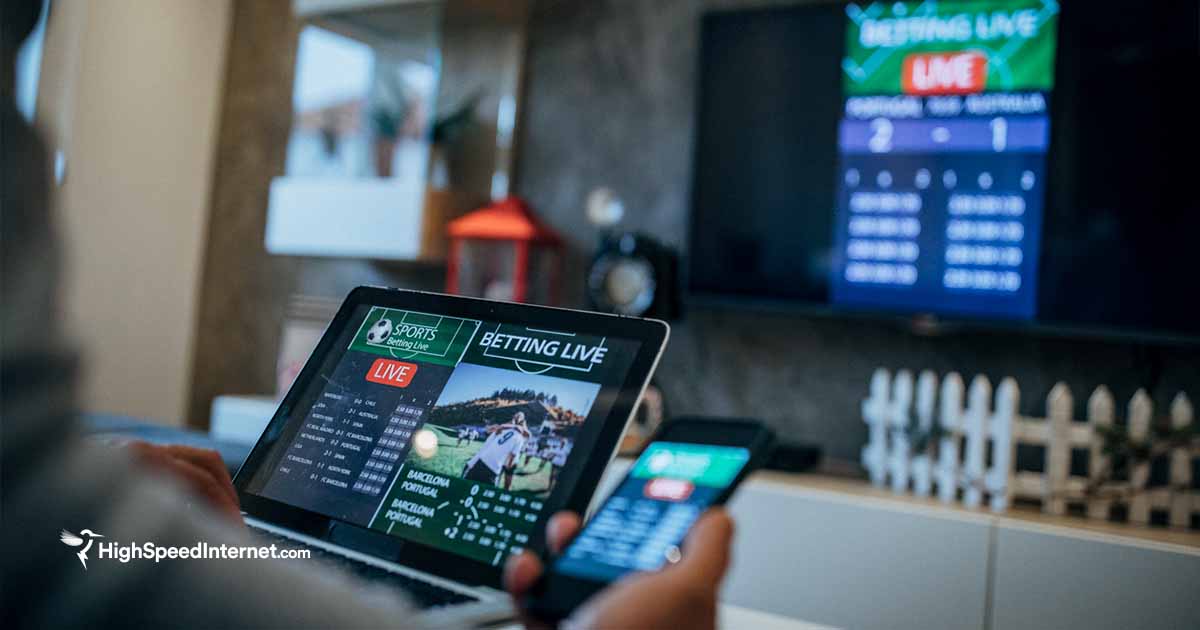Streaming Services vs Xfinity Cable Services
Jan 24, 2025 | Share
Brand Guides
Streaming platforms like Netflix and HULU have become an essential entertainment cornerstone of countless households. But can they replace a cable TV subscription outright? We’ve seen fewer TV subscribers year after year in our annual customer satisfaction surveys, likely due to decreasing discounts for internet and TV bundles.
However, that doesn’t mean cable is on its deathbed — far from it. There’s still a lot of convenience that comes with combining your services under a single provider. Xfinity® makes it especially easy to bundle Internet services with TV plans, allowing customers to experience the best that cable programming and streaming services have to offer.
For those unsure as to which option best fits their viewing tendencies, this guide offers a succinct comparison between Xfinity TV and streaming service options.
Find the best TV + internet bundles
Enter your zip to see providers in your area.
Streaming services pros and cons
| Service | Pros | Cons | |
|---|---|---|---|
| Xfinity TV | Robust channel lineup Bundle discounts More convenient billing and management | Annual contracts | View Plans |
| Streaming Services | Cheaper Month-to-month | Fewer channels |
Pros:
Streaming services have their fair share of advantages. The most prominent benefit is price. Some streaming options, like Netflix and Hulu, are much more cost-effective than basic cable packages — running anywhere from $7.99 to $24.99 per month. Sling TV is slightly more expensive, starting at $45.99 per month, but it also offers total access to over 30 channels.
Beyond the fact that individual streaming services cost less than cable, cancellation fees aren’t a part of the equation. Consumers aren’t subject to the same terms and conditions found with cable. There are no contracts, simply subscriptions. Users can purchase and cancel their accounts when and if they wish.
Streaming also offers high levels of convenience, allowing users access to shows wherever they have internet service. And with devices like the Google Chromecast, users aren’t confined to streaming on small screens, either — they can easily broadcast streamed media from their connected device onto any screen with an HDMI input.
Cons:
Streaming services don’t offer as much variety as cable — there isn’t a one-to-one exchange in terms of shows and channel lineups. For consumers who want regular access to sports channels or have to know who wore what to the Oscars, that lack of access can be a deal breaker.
Additionally, streaming video relies on an Internet connection. For subscribers enrolled in a slower DSL service — or even a lower tier cable Internet package — viewing capabilities may be limited. If the Internet connection can’t handle the load, the show quality will deteriorate.
Finally, users may be somewhat restricted by the device they use to stream or broadcast content. Apple TV’s apps are limited, and Chromecast only works via the connected device. If kids want to watch Saturday morning cartoons but don’t have access to the requisite app or device, they’re out of luck.
Xfinity Cable TV pros and cons
Pros:
Xfinity features a robust channel lineup, showcasing one of the greatest benefits of cable TV packages: channel selection. Cable customers have access to more shows and dedicated channels like ESPN and HGTV.
Another advantage is that cable subscribers can somewhat customize the package they want. Premium channels like HBO® are add-ons to the more basic packages. While it’s not quite comparable to the a la carte options recently developed in Canada, U.S. customers can opt out of certain packages, thereby saving money on their monthly bill.
For those interested in mobile viewing opportunities, Xfinity has an additional benefit — many channels offer cable subscribers remote streaming options via app or Internet connection. Customers just need their Xfinity username and password to access live content from a host of channels.
If price is a deterrent, subscribers can also bundle Xfinity TV with Internet and other services. Xfinity is one of the few cable ISPs still offering internet and TV bundle discounts. It’s also convenient, as users have to pay only one bill instead of dealing with two or three separate statements every month.
Cons:
Certain Xfinity plans do require contracts, which means that there may be an associated fee for early termination. Other costs, such as equipment rental expenses, may also be included.
In addition, some package pricing can be confusing. Many plans feature a low introductory rate that expires after a certain length of time, leaving subscribers with higher bills than they originally planned for.
The Verdict
When it comes to accessing TV and video today, it’s a buyer’s market. The cable industry’s efforts to keep pace with streaming services have given consumers a wide range of options.
For those ready to cut the cord, Xfinity offers reliable standalone Internet services, with some areas seeing speeds up to 2 Gbps . These faster speeds will ensure consistent streaming and a better viewing experience across all devices.
Viewing doesn’t have to be all or nothing, though. Consumers who can’t access their favorite local news program via streaming services may want to augment their current Netflix subscription with a basic cable plan, for example. In that case, Xfinity has competitive bundling packages for Internet and TV, allowing subscribers to leverage the advantages of both options.
In order to choose the service that’s right for them, consumers should consider the pros and cons of both options carefully. Once they’ve analyzed their viewing habits, they can find the Xfinity service package that fits their needs exactly.
*Pricing and speeds are current as of writing. Pricing and speeds are subject to change. Not all offers available in all areas.
Author - HSI Staff




